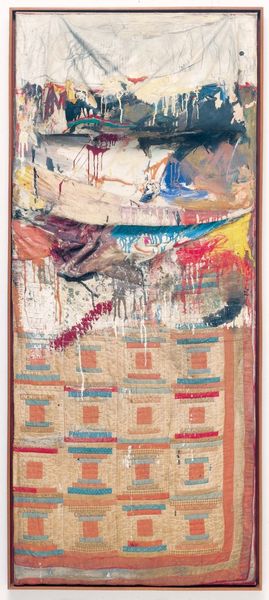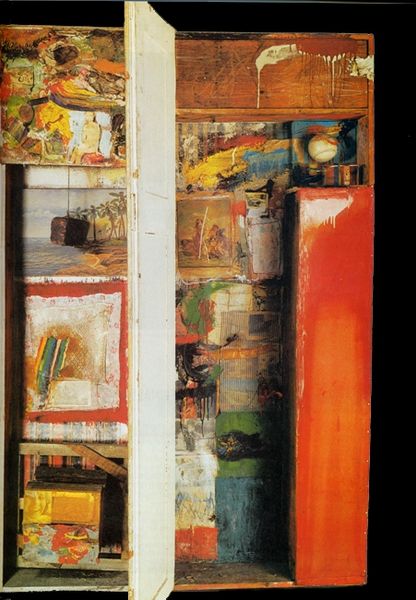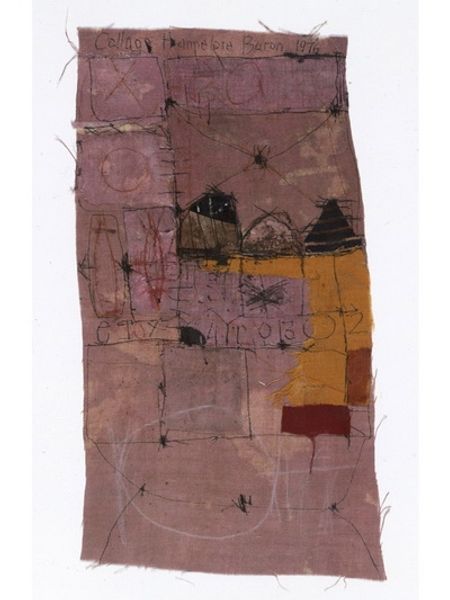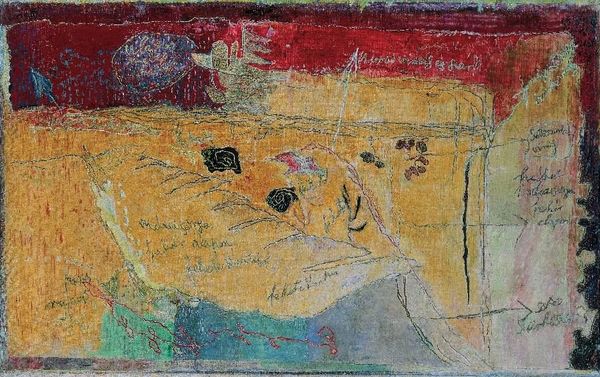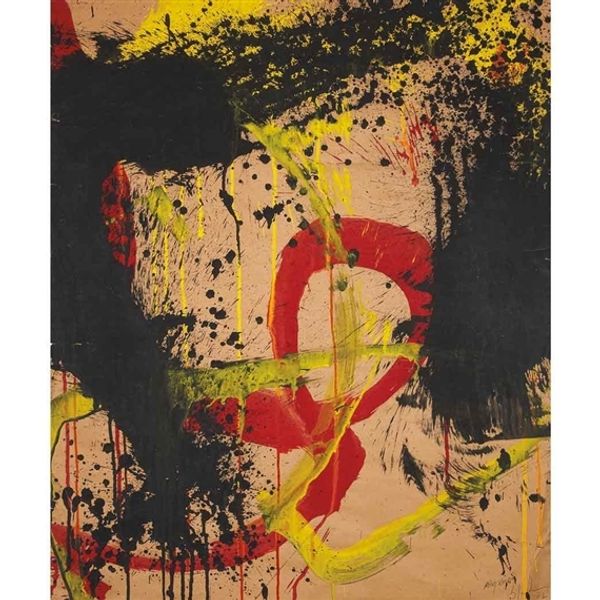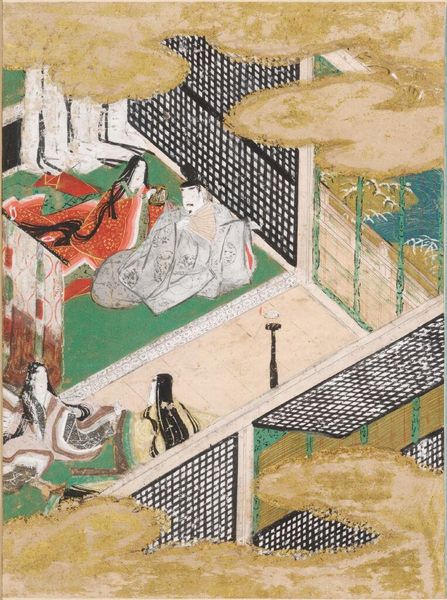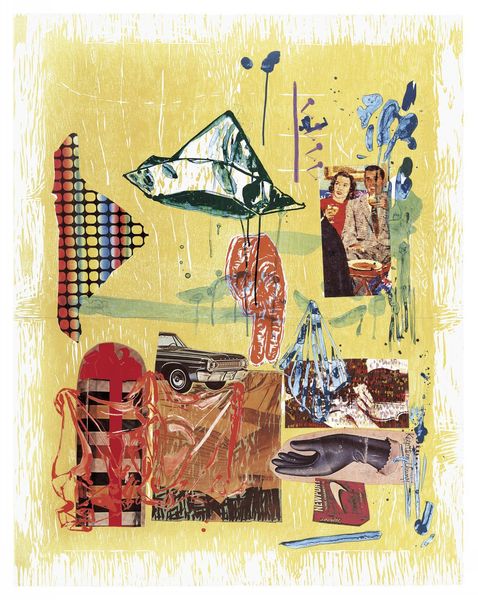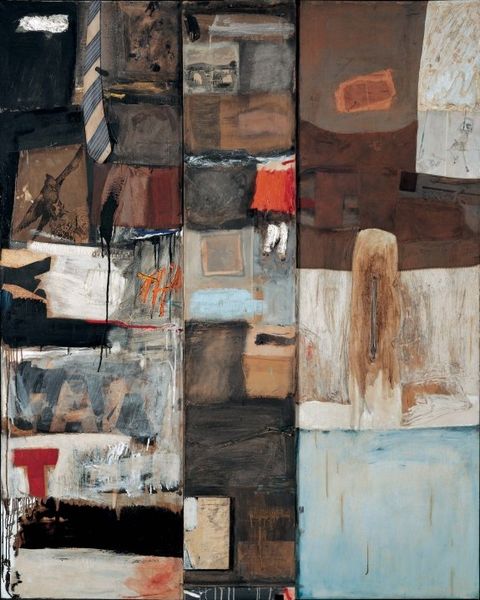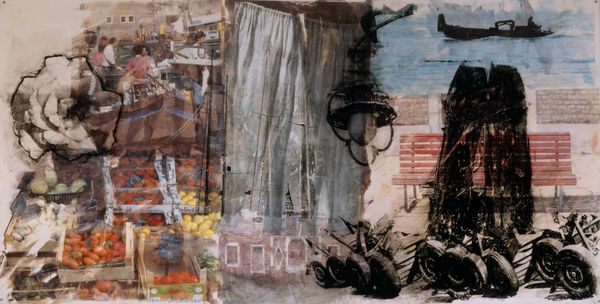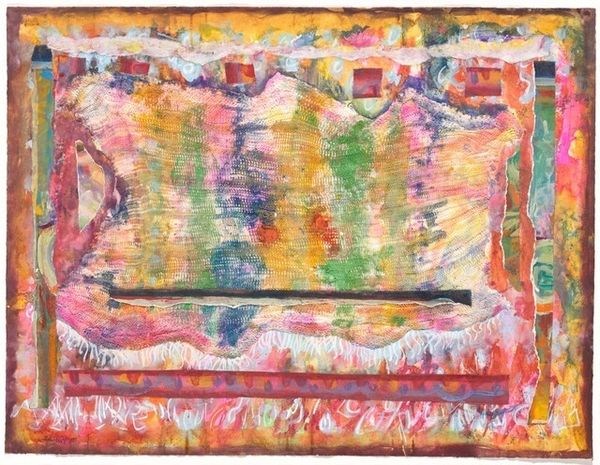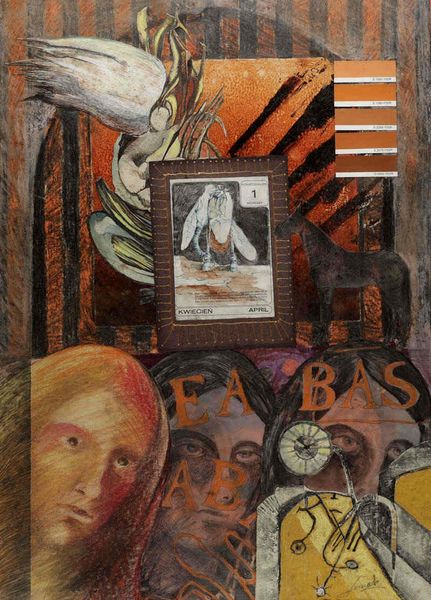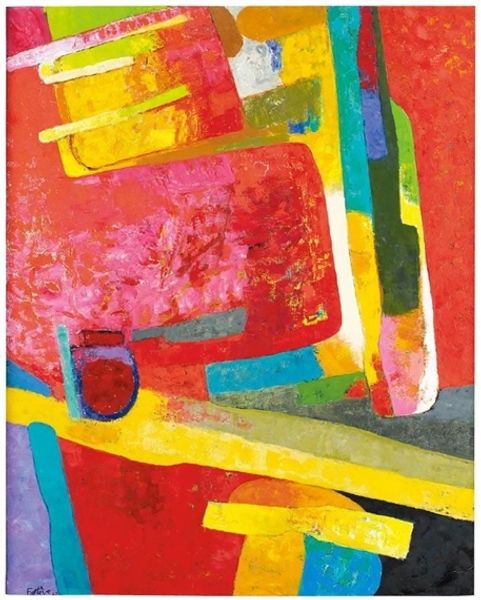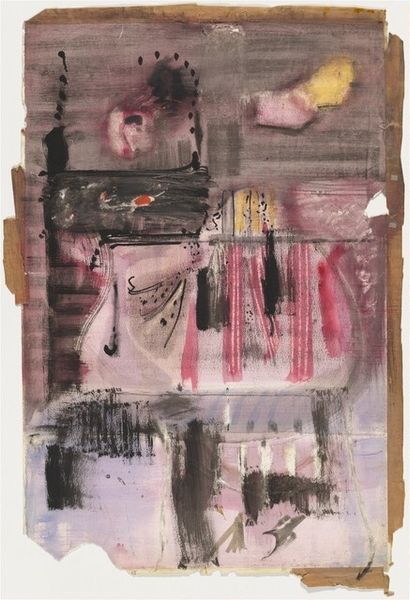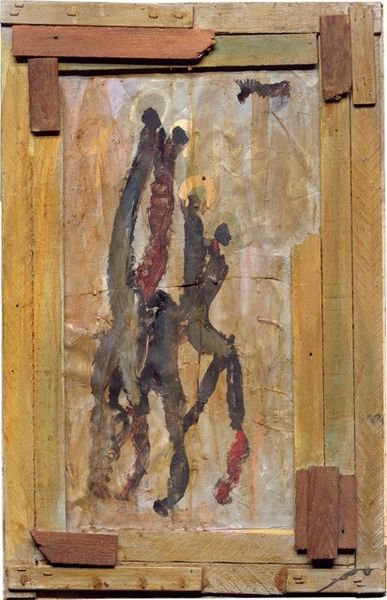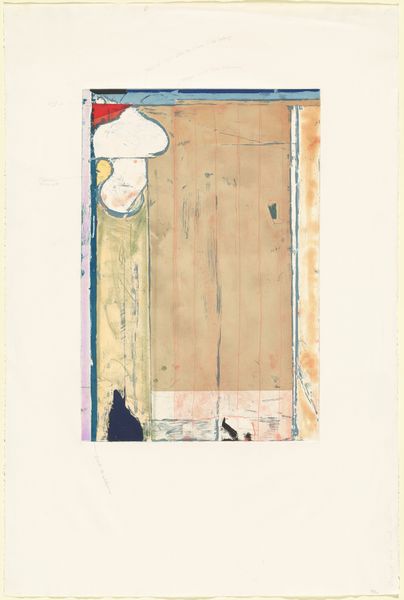
mixed-media, collage, assemblage, found-object, acrylic-paint, combine
#
abstract-expressionism
#
mixed-media
#
abstract painting
#
collage
#
assemblage
#
appropriation
#
found-object
#
acrylic-paint
#
oil painting
#
neo-dada
#
black-mountain-college
#
abstraction
#
pop-art
#
combine
#
mixed media
Copyright: © 2019 Robert Rauschenberg Foundation. All right reserved.
Curator: Robert Rauschenberg’s “Satellite” from 1955, housed here at the Whitney, offers a striking example of his “combine” paintings. It’s a mixed-media assemblage that merges painting and sculpture. What's your immediate impression? Editor: A sense of organized chaos, actually. The earthy tones, the layered textures... it almost feels like an archeological dig site. And then there's that bird perched on top. An odd contrast. Curator: Rauschenberg was deeply engaged in expanding the definition of art. Think about the context: Abstract Expressionism was the dominant force, valuing pure expression, while he was bringing the everyday into the gallery. "Satellite" epitomizes this push, appropriating discarded objects and challenging the established hierarchy. Editor: The process seems so central. Look at the layering, the drips, the deliberately rough edges. It screams materiality—the tactile nature of the paint, fabric scraps, the way it’s all built up. This is more than representation; it’s about the physical act of creation. It makes you consider labor. Curator: Absolutely. It challenged the notion of the artist as a solitary genius. He incorporated mass-produced items, things from the street, underscoring the artist’s role within a wider culture. And it disrupted the idea of a fixed meaning in art, too. “Satellite” becomes a receptacle for multiple narratives. Editor: You're right. And those narratives aren't fixed or easily interpreted. It forces a connection to the consumer world—all those disposable materials, repurposed, reused. It questions what we value, both in art and in our daily lives. What’s considered trash, and what’s treasure, right? Curator: Exactly. By placing it in the gallery, he reframes these common objects. The found bird also points to artifice. The sculpture itself is made, constructed. Not unlike art production, its public reception—the spectacle of "high art," is often disconnected from the initial means of its production and the intent behind its making. Editor: It makes me think about how much labor goes into this seemingly haphazard process, and the accessibility of art. Someone walking in from the streets might actually relate to these materials that are often unseen or undervalued. Curator: It's a fascinating commentary on the role of art and the artist. He was breaking down walls. Editor: Yes, walls within the art world and between art and life itself. A complex piece and testament to its time.
Comments
No comments
Be the first to comment and join the conversation on the ultimate creative platform.
